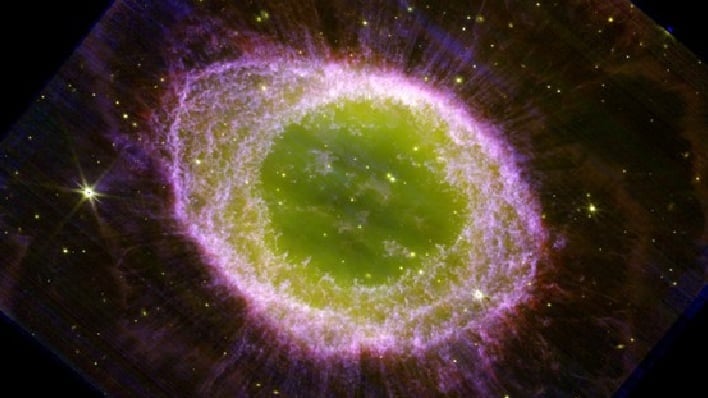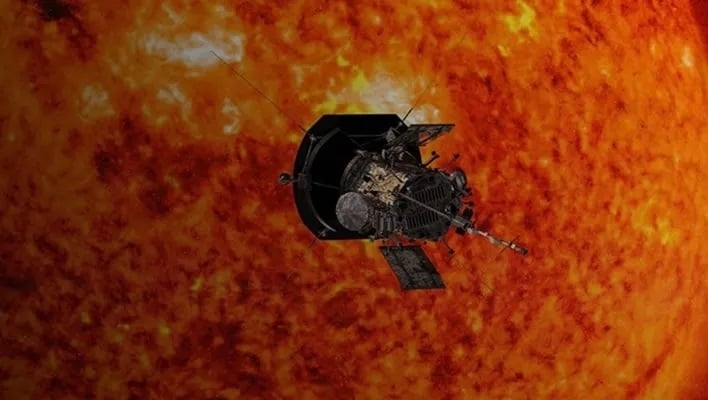NASA's Stunning New Images Of A Star's Final Moments Hint At Our Sun's Future
For almost 300 years, astronomers have observed that planetary nebulae are usually oval, circular or even bipolar. With its messy and asymmetrical appearance, NGC 6072 is quite unique and different, however.

Webb's NIRCam (Near-Infrared Camera) also captured images that revealed that NGC 6072 is multipolar, meaning that it possesses multiple lobes of outflows that increase in size and are positioned at varying angles from its center, instead of simply having one or two lobes of expelled material.
NGC 6072 was expelled from a low-to-intermediate-mass star that was close to death. Our sun also falls within the range of a low-to-intermediate-mass star, so what should we expect when our sun approaches its death? Will the planetary nebulae ejected by our sun create "a very messy scene resembling splattered paint," or will it take a circular form?

Well, NGC 6072 wasn't ejected by a single star -- it was a binary star system. JWST observed several pieces of evidence that attest to this fact. Our sun, on the other hand, is a single star; so, it's unlikely to eject an irregular nebulae. It will likely take a circular form.
The structure of planetary nebulae is quite complex. Its physical and chemical attributes cannot be entirely predicted, however, this discovery has deepened our understanding of what will likely happen to our sun when it approaches its end.

